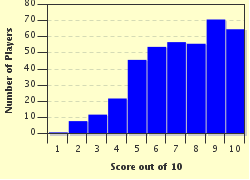Quiz Answer Key and Fun Facts
1. In Australia, coconut flavored squares containing rice bubbles, raisins and glace cherries are eagerly made (and consumed) by children being kept occupied in the restless days leading up to Christmas. What is their seasonal name?
2. In Chile, a popular Christmas drink is called 'Cola de Mono'. What is the literal translation of this name?
3. In what southern area of France will you find the tradition of setting out 'Thirteen Desserts' on Christmas Eve, and leaving them on the table for three days?
4. In Germany, one of the traditional Christmas foods is based on a story brought to us by the Brothers Grimm in 1812. Which story provided the inspiration for 'pfefferkuchenhaus'?
5. In what country might you find people decorating their Christmas tree with 'szaloncukor'?
6. In Iceland, the preparation of 'laufabrauo' is traditionally undertaken by the entire family. Which of these is the best description of this treat?
7. Italy has many different traditional Christmas cakes, originating in different regions. In which city did 'panettone' originate?
8. During the nine days preceding Christmas in the Philippines, participants in the services known as 'simbang gabi' (Filipino for night mass) traditionally break their fast after the service with 'bibingka'. Which of these is the best description of 'bibingka'?
9. The Portuguese 'Bolo Rei' (King's Cake) is a traditional Christmas dish. The person who finds a certain hidden item in their slice of cake is expected to buy the next year's cake. What item is this?
10. In Sweden, 'Lussekatter' (Lucy cakes) are eaten during Advent, especially on December 13, the Feast of Saint Lucy. What ingredient gives these buns their distinctive golden color?
Source: Author
looney_tunes
This quiz was reviewed by FunTrivia editor
gtho4 before going online.
Any errors found in FunTrivia content are routinely corrected through our feedback system.

